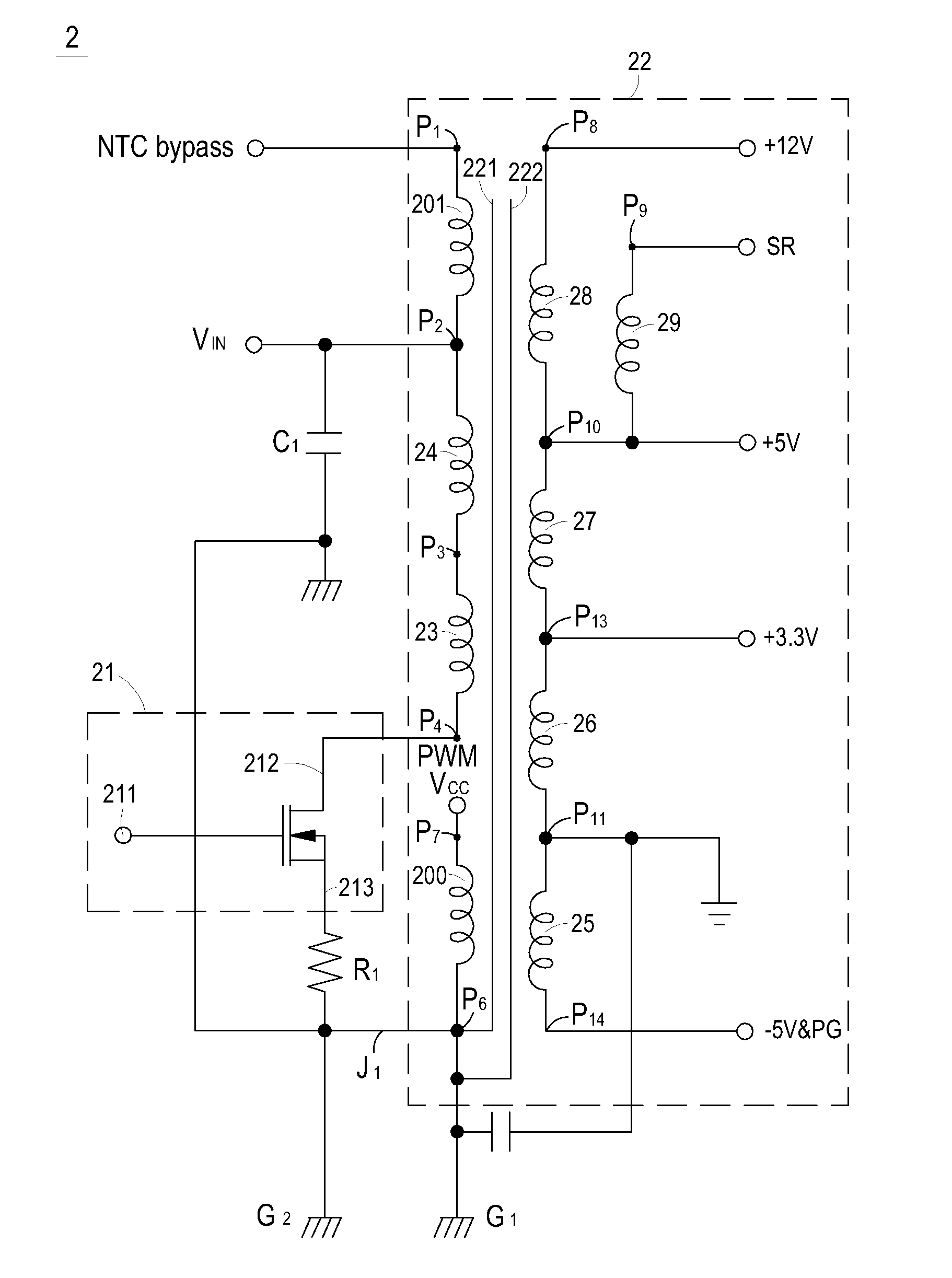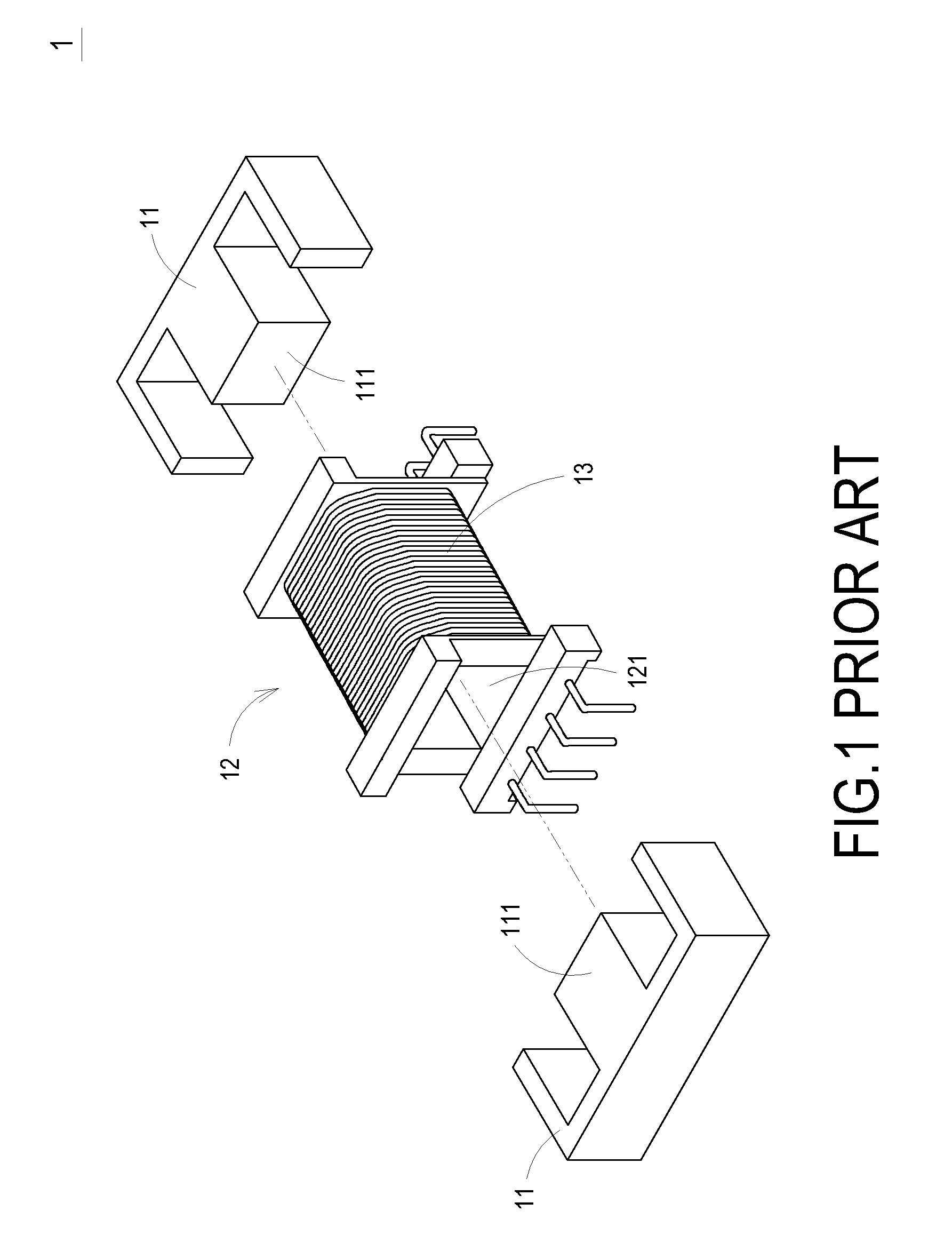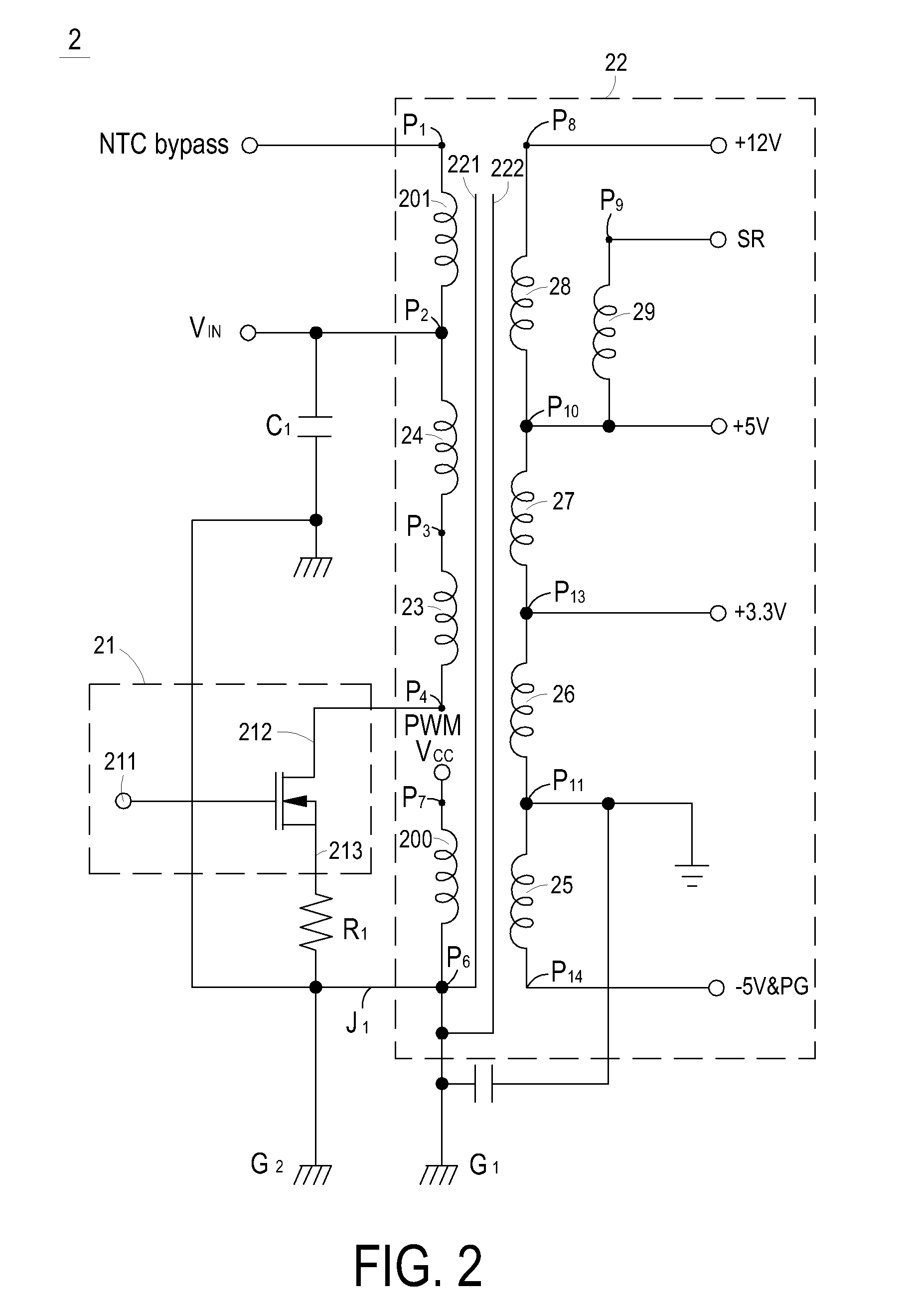Transformer for reducing electromagnetic interference and power transform circuit applied therein
a transformer and electromagnetic interference technology, applied in the field of transformers, can solve the problems of lowering the operation efficiency of the transformer, still a problem to be solved, etc., and achieve the effect of reducing the emi
- Summary
- Abstract
- Description
- Claims
- Application Information
AI Technical Summary
Benefits of technology
Problems solved by technology
Method used
Image
Examples
Embodiment Construction
[0018]The present invention will now be described more specifically with reference to the following embodiments. It is to be noted that the following descriptions of preferred embodiments of this invention are presented herein for purpose of illustration and description only; it is not intended to be exhaustive or to be limited to the precise form disclosed.
[0019]FIG. 2 is a circuit diagram illustrating a preferred embodiment of a power transform circuit according to the present invention. As shown in FIG. 2, a power transform circuit 2 includes a power input VIN, a switch 21, and a transformer 22. The transformer 22 is electrically connected to the power input VIN and the switch 21, respectively. The transformer 22 includes a primary winding, a secondary winding, a first shielded element 221, a second shielded element 222 and a plural of pins P1˜P4, P6˜P11 and P13˜P14.
[0020]In the preferred embodiment of FIG. 2, the primary winding can include a first primary winding 23 and a secon...
PUM
| Property | Measurement | Unit |
|---|---|---|
| electromagnetic interference | aaaaa | aaaaa |
| electromagnetic coupling rate | aaaaa | aaaaa |
| insulating | aaaaa | aaaaa |
Abstract
Description
Claims
Application Information
 Login to View More
Login to View More - R&D Engineer
- R&D Manager
- IP Professional
- Industry Leading Data Capabilities
- Powerful AI technology
- Patent DNA Extraction
Browse by: Latest US Patents, China's latest patents, Technical Efficacy Thesaurus, Application Domain, Technology Topic, Popular Technical Reports.
© 2024 PatSnap. All rights reserved.Legal|Privacy policy|Modern Slavery Act Transparency Statement|Sitemap|About US| Contact US: help@patsnap.com










